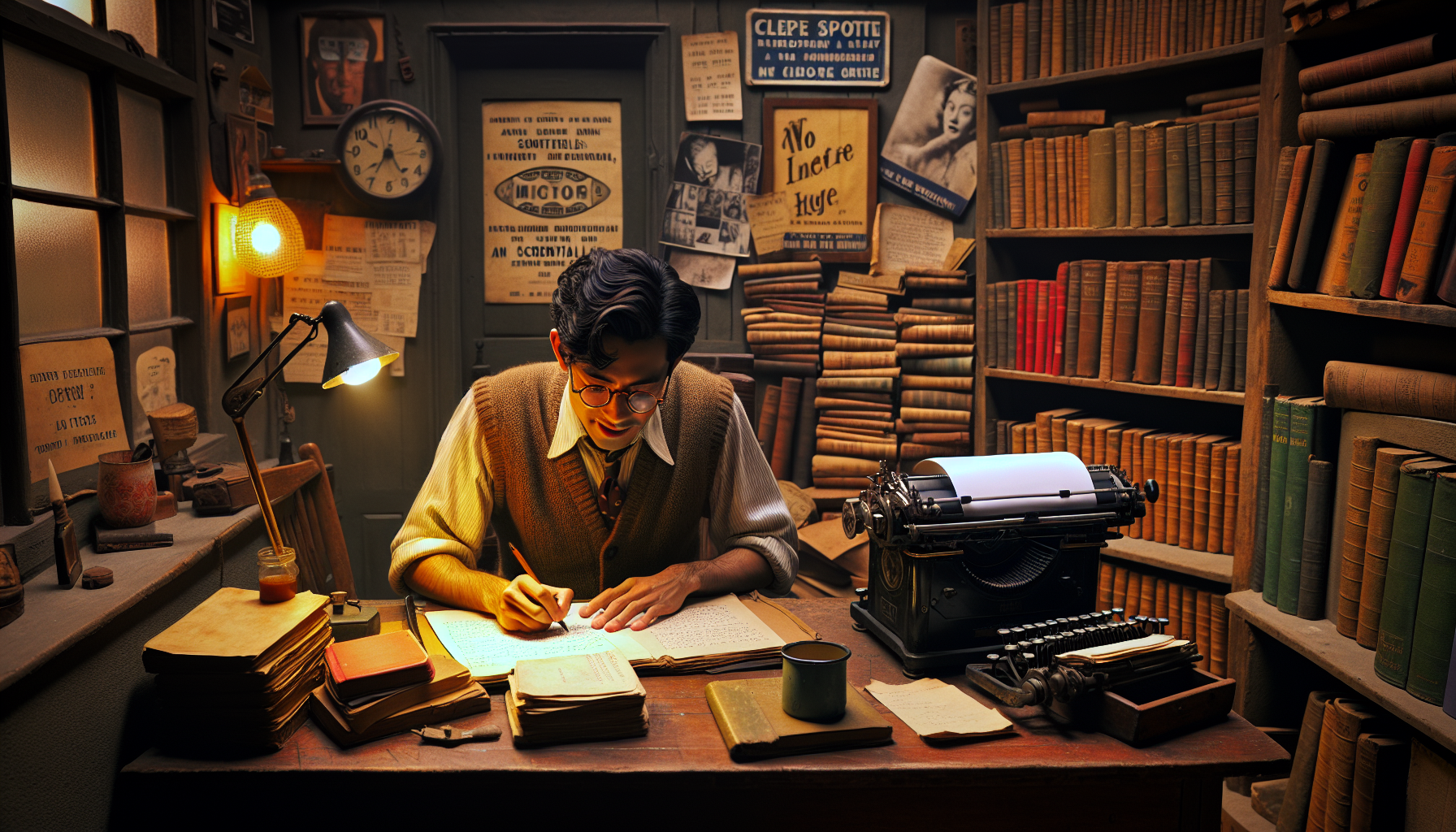
Scene It All Before?
Welcome to the mad, mad world of crafting scenes in screenwriting, where the battle between glorious words and the cruel delete button comes to life. Let’s dive deep into an intricately crafted scene—imagine a dimly lit diner, a strained relationship over a bowl of cold fries, and a secret that could change everything. This isn’t just a scene; it’s a cry for popcorn and a good seat!
Setting Up The Scene: Where’s The Drama?
Our scene starts in the most clichéd place possible: a drab diner. But wait, the magic’s in the mundane, remember? It’s raining outside. Of course, it is—it’s a screenwriting example! Inside, fluorescent lights flicker, not just setting the ambiance but also mirroring the unstable relationship of our protagonists, Betty and Jim. The stage is set, the players are in place, and the game is about to begin.
Dialogue That Does Double Duty
Betty asks, “You like the fries?”. Seems innocent, right? Wrong. This isn’t just about potatoes; it’s a loaded question. It’s really her asking, Are we okay? Because these fries are cold and so is this relationship. Jim grunts—a grunt that carries the weight of a thousand unsaid conversations. With these few words, we delve into backstory, setting up their estrangement with more layers than our previously mentioned fries.
Action: Cue the Suspenseful Sip
Just as Betty voices her concern disguised as a culinary critique, Jim takes a long sip of his coffee—a little too long. His avoidance to address the fries speaks volumes. In screenplays, actions often scream louder than words. This sip isn’t just a sip, it’s an escape from verbalizing his feelings. It buys Jim time and builds tension, crucial ingredients for a gripping scene.
Peeling Back the Layers: The Secret Spill
The air thickens. Jim sets down his coffee, the clink sharp against the murmur of other diners. This is the moment—no more dancing around stale fry metaphors. “I took the job in Boston,” Jim blurts out. The secret’s out and it’s as messy as knocked-over salt shakers. Betty’s face crumples, not unlike the napkin she’s been twisting in her lap the whole time.
Visceral Visuals Stir Emotions
Here’s where the real artistry comes in. Betty’s crumpled face, the storm outside reflecting her inner turmoil—these visuals yank at the audience’s heartstrings. Every screenwriter worth their salt (knocked over or not) knows the power of visual metaphors. The storm isn’t just bad weather; it’s chaos, it’s emotional backlash!
Tying Up Loose Ends… Or Not
As the scene draws to a close, Jim reaches across the table, but Betty pulls away—physical distancing to mirror their emotional rift. The audience is left hanging, clutching their metaphorical (or not) popcorn. Will they resolve things? Do we get closure on the fries? Hang onto your seats, folks, because that’s scene-crafting gold!
Final Beat: The Exit
Our scene ends as Betty buries her face in her hands and the waitress approaches with a hesitant, “Refill on the coffee?” Life—and screenwriting—thrives on such interruptions. Such an innocuous question, yet loaded with meaning after what just transpired. Will Jim accept the refill, signifying he’s willing to stay and face things? Or will he reject the coffee and, symbolically, the remaining shreds of his relationship with Betty?
So, there you have it—the anatomy of a well-brewed, high-stakes diner scene. Through snappy dialogue, telling actions, and poignant visuals, screenwriters craft experiences so vivid, viewers can almost taste the cold fries. Whether you’re a budding screenplay writer or a seasoned cinephile, remember: every scene, every line, and every action can drive the story forward. And sometimes, just sometimes, it’s okay if those fries remain uneaten.






